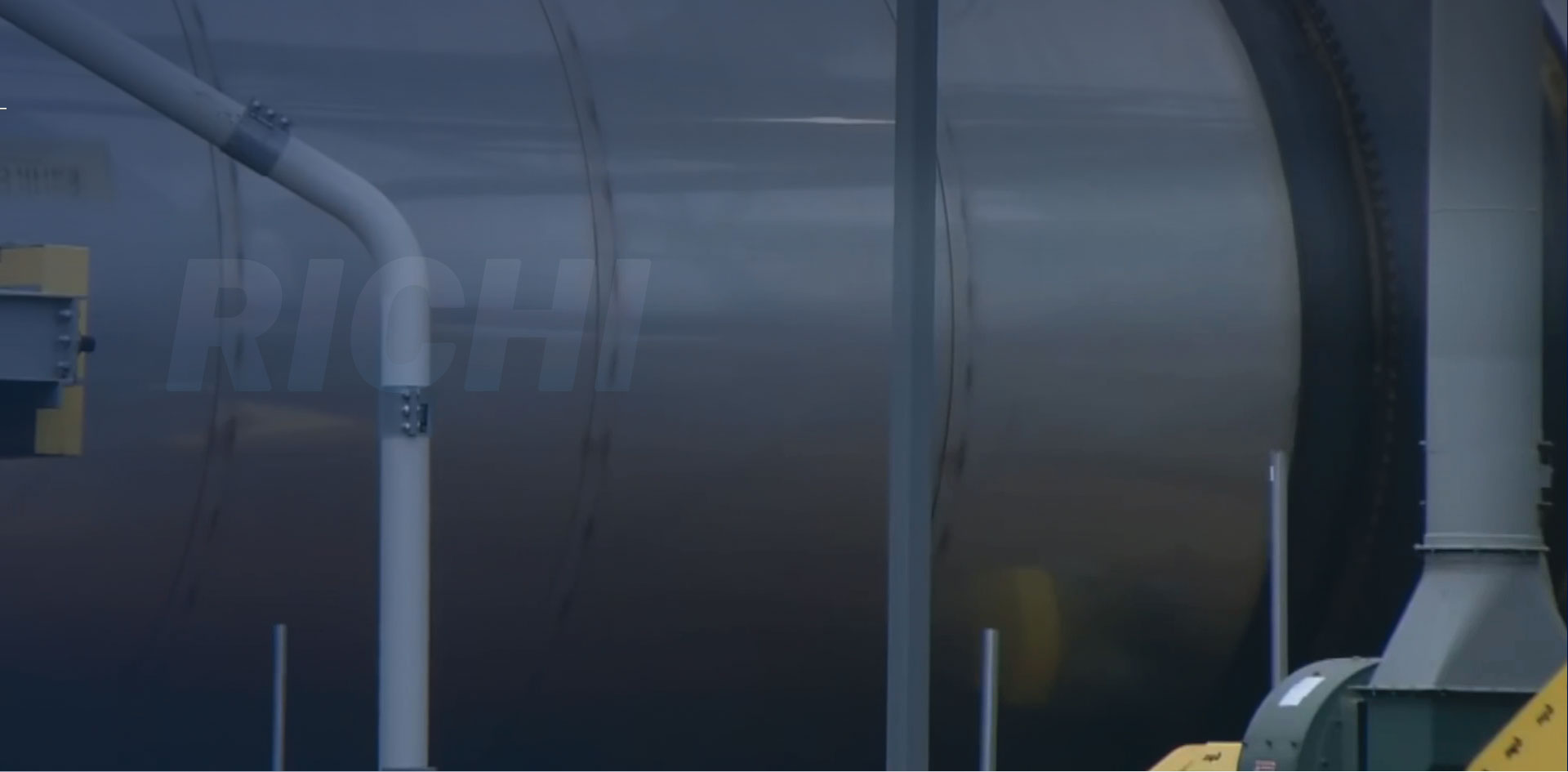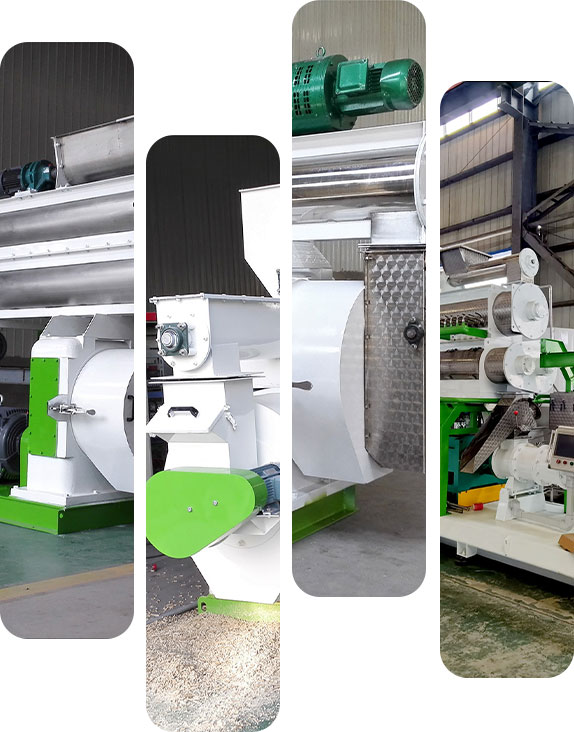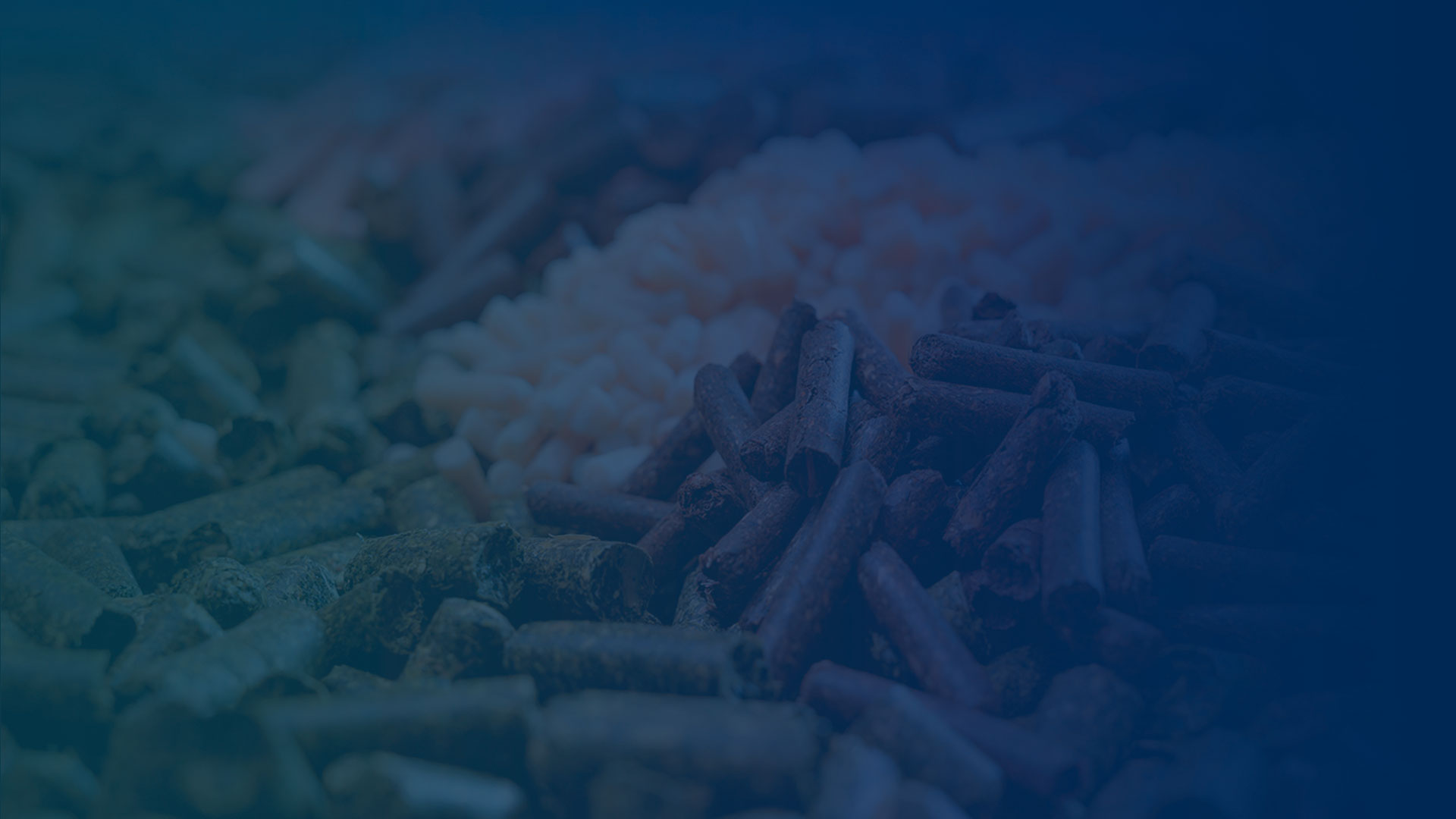
Discover our cutting-edge pellet machines designed for animal feed, biomass pellet, and aquatic feed production.
Learn More
Optimized for different animal feed formulations and different production scales. Ensure efficient pelleting, nutrient retention and stable yields. Discover the perfect solution to increase your feed production and improve animal health and growth.

Find our wide range of models for commercial and industrial biomass pellet production. Helps convert wood, agricultural waste, and other organic materials into high-density, energy-efficient pellets. Reduces waste and produces environmentally friendly fuel alternatives.

Precise control of pellet consistency, stability in water with an extruder that ensures optimal nutritional extension of aquafeeds for water quality. Ideal for commercial aquaculture seeking efficient production.
Pelletized production ensures a consistent and uniform size, improving handling, transportation, and storage.
Pelleting retains nutrients and ensures even distribution, leading to better feed conversion rates in animals.
Pellets minimize dust and material loss during handling, making the process more sustainable.
Pelletizing reduces energy consumption during production and optimizes material use.
Applicable for animal feed, biomass fuel, and more, offering flexibility across industries.


What kind of pellet plant do you want to establish?
How many tons per hour about this plant you want to build?
Where is this pellet plant going to be built?
When do you plan to start the operation?
Pelletizing equipment is used to compress raw materials into small, dense, and uniform pellets. These pellets have various applications across different industries, depending on the type of material being processed. Below are the primary uses:
Pelletizing equipment plays a crucial role in improving material efficiency, reducing waste, and adding value across various industries, from agriculture to energy and manufacturing.
Pelletizing significantly enhances efficiency in both animal feed production and biomass energy generation by improving the handling, storage, and utilization of raw materials. Here's how:
Choosing the right pellet mill size depends on the type of production—animal feed or biomass pellets—and the daily production requirements. Here’s a clear guide to help you determine the best fit:
By following this principle, customers can select the pellet mill size that perfectly suits their project needs, ensuring efficient and cost-effective production.
Yes, you can customize pellet size in most feed production equipment, including pellet mills and grinding machines. The size of the pellets is adjustable to meet the specific dietary needs of different animals, ensuring optimal nutrition and digestibility.
Finally, no matter what problems you encounter, please consult the equipment manufacturer - RICHI Machinery to determine how to customize the particle size to your specific production needs.
If you need further information, please contact us

Note: Pellet production is a continuous and complex process, requiring many equipment to complete the production from raw materials to finished pellets. Therefore, it is suitable for commercial projects but not for personal use.

RICHI stick to the service principle is: We are focusing on your future, your future is our future!
© HENAN RICHI MACHINERY CO., LTD 1995-2025
Product Line-Up / Privacy Policy